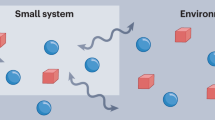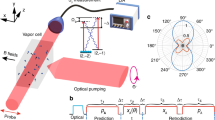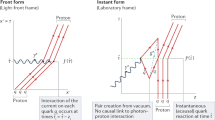Abstract
THERE are undoubted difficulties in the interpretation of quantum physics, and Prof. A. Landé1 has made a determined effort to circumvent them in a straightforward and ‘common-sense’ way. He says: “Actually, an electron always behaves exactly as a particle ought to behave. It is a myth that it sometimes misbehaves”2. Irreducibly statistical relationships are central to Prof. Landé's treatment, and the appropriate recognition of their central importance is for him the special feature of quantum theory. But matter (unlike light) for him consists of “genuine particles”, and neither matter nor light has a genuine wave-particle schizophrenia. This is what he means by unity in his quantum physics, and his purpose is to re-frame quantum physics on this basis. It is the purpose of this communication to question his success. In addition to providing a new version of the content of quantum physics, Prof. Landé also offers a new derivation of it, which is based on “non-quantal” principles. This communication is not concerned with the derivation; however, if the present remarks concerning the body of the theory as presented are well founded, then it cannot be the case both that Prof. Landé's premises are valid, and that they lead validly to his version of quantum physics.
This is a preview of subscription content, access via your institution
Access options
Subscribe to this journal
Receive 51 print issues and online access
$199.00 per year
only $3.90 per issue
Buy this article
- Purchase on Springer Link
- Instant access to full article PDF
Prices may be subject to local taxes which are calculated during checkout
Similar content being viewed by others
References
Landé, A., From Dualism to Unity in Quantum Physics (Cambridge University Press, 1960).
Op. cit., p. xi.
“And here it must be emphasised that position in space-time defines a ‘state’.” Op. cit., p. 29. See also p. 67 where he interprets Heisenberg as demonstrating only a spread in the observations “of more exactly determined px-values”
Duane, W., Proc. U.S. Nat. Acad. Sci., 9, 158 (1923).
Landé, A., Op. cit., p. 69; italics in original. See also p. xii and p. 70.
Author information
Authors and Affiliations
Rights and permissions
About this article
Cite this article
STOPES-ROE, H. Interpretation of Quantum Physics. Nature 193, 1276–1277 (1962). https://doi.org/10.1038/1931276a0
Issue Date:
DOI: https://doi.org/10.1038/1931276a0
This article is cited by
-
Interpretation of Quantum Physics
Nature (1962)
-
Interpretation of Quantum Physics
Nature (1962)
Comments
By submitting a comment you agree to abide by our Terms and Community Guidelines. If you find something abusive or that does not comply with our terms or guidelines please flag it as inappropriate.



